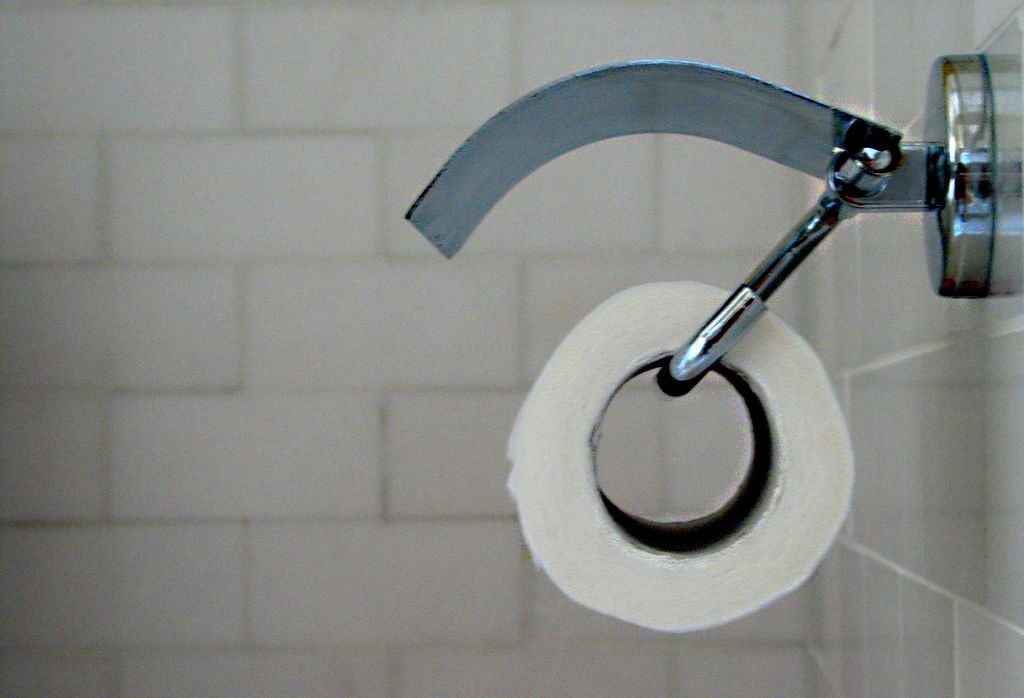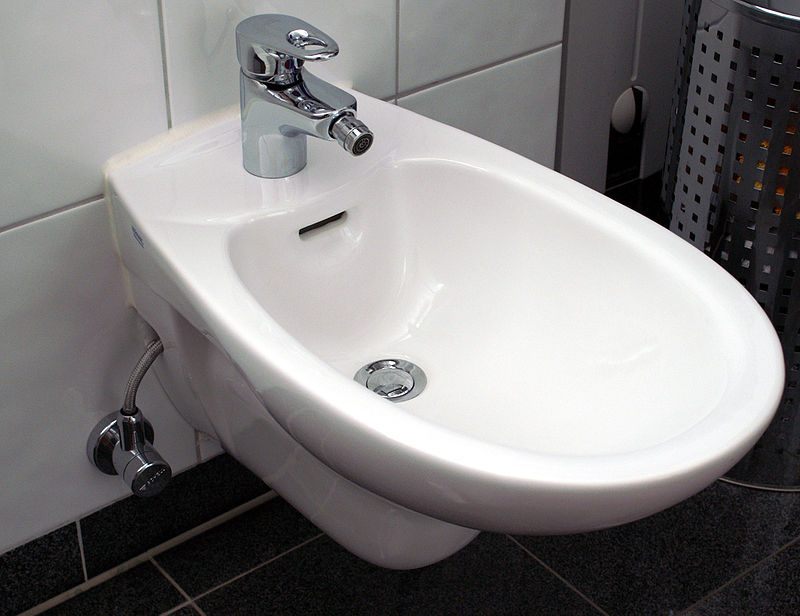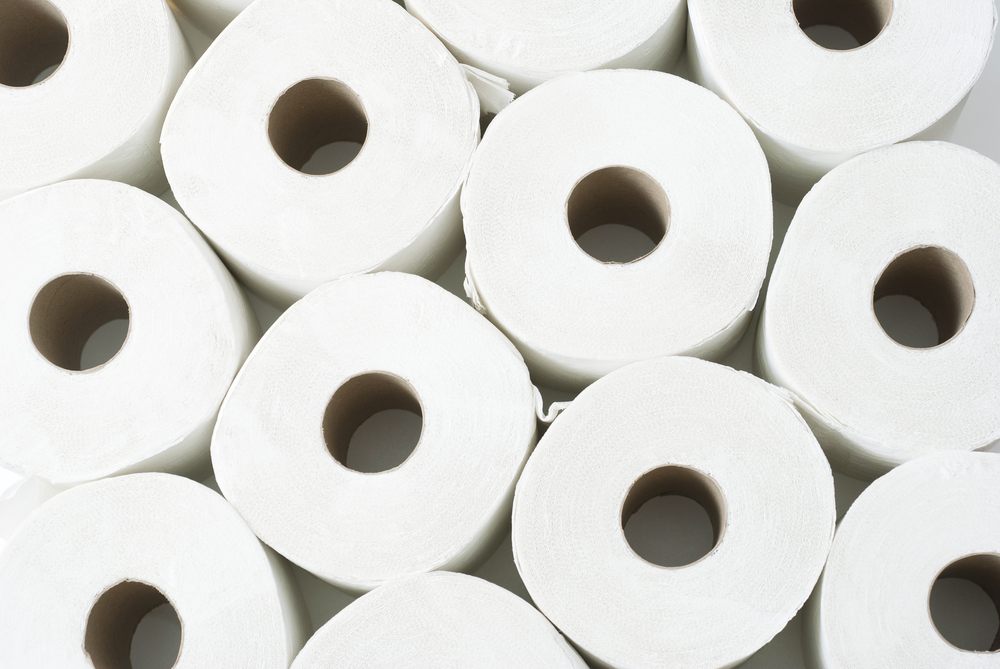The Hygiene and the History: We Investigate Post-Pooping Protocol

Toilet-side tush paper. (Photo: emdot/flickr)
Considering it’s an action healthy humans perform on a (hopefully) daily basis, you’d be surprised at how little information there is out there about the best way to clean your butt after you poop.
“I am not aware of anything in the medical literature about what is the ‘best way’ to clean up,” says Dr. Linda Lee, a gastroenterologist at Johns Hopkins. Nobody at the Mayo Clinic would comment on the subject. The Center for Disease Control, which I figured would know something about the subject given that they’re the agency that has extensive information on handwashing, has no information on the topic and could offer nobody from within the agency who might know anything about it. Several other world-class medical centers either ignored my sheepish question or were unable to come up with an expert.

Gayetty’s Medicated Paper. (Photo: Public Domain/WikiCommons)
I eventually ended up getting the most information, from Dr. Sejal Shah, a dermatologist based in Manhattan. But before we get to what she said, let’s do a quick survey of the ways people around the world clean themselves.
Toilet paper is by far the most common method in North America, but it’s actually a fairly recent invention, credited to Joseph Gayetty, whose “Gayetty’s Medicated Paper, For The Water Closet” debuted in 1857. Gayetty’s paper was made of manila hemp and smoothed with aloe—not bad, really! The roll design came a little later, in 1883, and took off so thoroughly that more than 7 billion rolls of toilet paper are sold each year in the U.S. alone.
The idea of using paper didn’t originate with Gayetty; reports of using paper to clean can be found in some accounts of visits to China in in the 6th century AD. Most of the rest of the world at that time used either water, which we’ll get to in a minute, or some other material. Sometimes that was a natural material (leaves, stones, seashells) and sometimes it was manmade (bits of cloth, sometimes on a stick). Those remain in some use, but for the most part, the division in cleaning methods is between toilet paper and water.

A bidet. (Photo: Public Domain/WikiCommons)
Outside North America, water reigns. Most of Europe and Japan rely on various forms of the bidet. Sometimes they’re mounted on the toilet or toilet seat, as in the fantastically popular Japanese Toto washlet, and sometimes the water comes out of a separate hose, but the basic idea is the same: you clean yourself with a stream of water. Drying also takes multiple iterations. Some models of bidet (particularly the high-tech ones seen in Japan and South Korea) have air jets to dry, but elsewhere toilet paper or even handkerchiefs or small bits of cloth are used. It’s not so different from using a hand towel to dry your hands after washing, really.
In much of the Middle East, South Asia, and Southeast Asia, the hand-washing technique is more popular. A vessel full of water is set beside the toilet, and the hand is used to splash water on the dirty area until clean. The area is sometimes dried with minimal amounts of toilet paper or cloth afterwards and the hands are cleaned. (In many Muslim countries, the left hand is specifically used for this purpose, and it’s considered a dirty hand, not to be used in social situations.)

Toilet paper from France, c. 1960s. (Photo:
Visitors to North America are sometimes puzzled by the lack of water-based cleaning methods and the seemingly smooth acceptance of what looks like an obviously inferior cleaning method. The jokes have been made time and time again: if you get, I don’t know, melted chocolate on your hands, you don’t clean them with thin paper, do you? No, you clean them with water, in a sink. So why wouldn’t you do the same with your butt?
Then there are the environmental concerns. Scientific American posted a long story back in 2009 examining the environmental repercussions of wiping techniques, and it wasn’t kind to our homegrown rolls of paper. Toilet paper requires stupendous amounts of energy and raw material in the form of trees to make. It clogs plumbing. And it even requires more water to produce than it would take to just use a bidet! So why haven’t we Americans left the roll behind?
The answer is kind of unexpected: basically, it just…doesn’t really matter that much. Plus, we have a huge infrastructure of toilet paper manufacturing and distribution in this country in the form of equipment and culture. Dr. Shah says that “probably the safest method is to just use water,” but she notes that there’s really not much risk in using toilet paper even if it’s slightly less effective.

Controls at a bidet in Tokyo airport. (Photo: Doug Letterman/flickr)
“Obviously you can get bacterial infections in that area, but I don’t really think that would be related to wiping,” says Shah. “The bacteria in poop doesn’t necessarily lead to bacterial infections.” E. coli, for example, is a destructive and dangerous bacteria that’s found in poop, but it only wreaks havoc when it’s been ingested; simply laying on the skin, even sensitive skin around the anal opening, won’t cause an infection.
Fungal infections are more likely, primarily due to the water content of feces. In general, you don’t want to keep water sitting up against the skin. “Moisture causes maceration of the skin, and that makes the skin very fragile,” says Shah. Maceration in this case means something, says Shah, like “waterlogged,” and it essentially breaks down the skin. “The skin is a really good barrier, it protects against a lot of things, but if it’s broken down it can’t act as a barrier, so you get skin infections, basically,” she says. Macerated skin is much more vulnerable to fungal infections than dry skin.

Rolls and rolls of toilet paper. (Photo: images72/shutterstock.com)
Similarly, you can cause little tears with improper wiping technique or materials. A pinecone is not a great wiping implement. “The skin right around the anal opening is going to be a little more sensitive,” says Shah, and using a sharp or rough product can tear it. Even using toilet paper can be damaging in this wa as over-aggressive wiping can open up “microfissures,” or small tears, in that sensitive skin. And those tears provide a new pathway into the body for fungus or bacteria that normally wouldn’t be risky.
All of this provides a mixed view on the ideal material for wiping. Water is very good, because it’s gentle and won’t cause tears, but you want to stay away from residual moistness. Toilet paper isn’t bad, because it easily soaks up any moisture, but it also can be a little rough, which is bad. The ideal method would probably be a water bath followed by careful, gentle, and immediate drying, whether that’s with toilet paper or a jet of warm air.
One method that’s an immediate no-go? Wet wipes. Chemicals, mostly preservatives, common in wet wipes have been linked repeatedly with allergic reactions and “severe perianal and perineal allergic contact dermatitis.” In other words? A horrible rash. Wiping and wetness, though, are perfectly fine.








Follow us on Twitter to get the latest on the world's hidden wonders.
Like us on Facebook to get the latest on the world's hidden wonders.
Follow us on Twitter Like us on Facebook